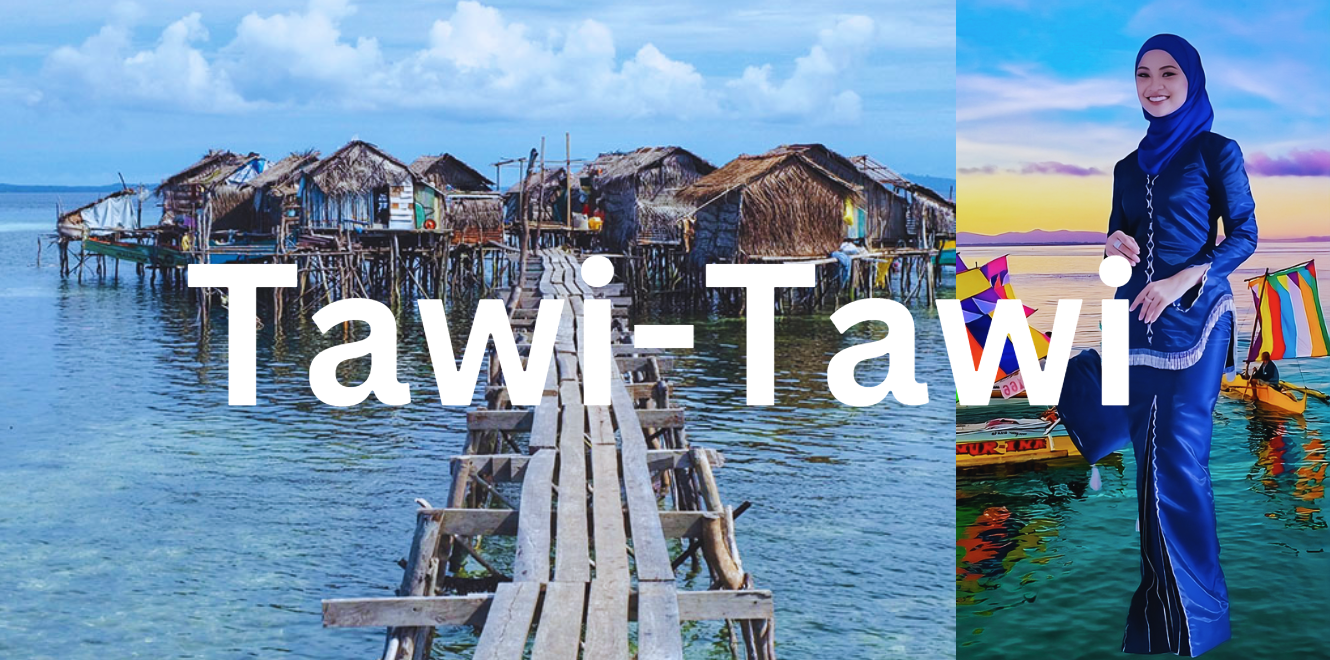Tawi-Tawi is a province in the Philippines located in the Bangsamoro Autonomous Region in Muslim Mindanao (BARMM)[1]. It is part of the Sulu Archipelago and is near the provinces of Lanao del Sur[2] and Maguindanao[3] in central Mindanao. The capital of Tawi-Tawi is Bongao.
The province covers an area of 3,626.55 square kilometers (1,400.22 square miles). According to the 2015 Census, Tawi-Tawi had a population of 390,715, making up 10.33% of the BARMM population, 1.62% of the total population in Mindanao, and 0.39% of the population of the Philippines. The population density is 108 people per square kilometer (279 per square mile)[Source].
History of Tawi-Tawi
Tawi-Tawi was once part of Sulu province. On September 11, 1973, it became a separate province under Presidential Decree No. 302, with Bongao as its capital.
Local folklore says that the Samal people of Tawi-Tawi originally came from the Malay Peninsula. The province’s culture has been influenced by close ties to other Southeast Asian regions.
Tawi-Tawi is recognized as the first place in the Philippines where Islam was introduced. In 1380, Sheik Karim ul-Makhdum built the first mosque in Simunul, which remains a revered site for Philippine Muslims. Historically, Tawi-Tawi was part of the Sulu Sultanate, which was established in the 14th century.
During the Spanish colonial period, Tawi-Tawi remained largely independent from Western control. The Spanish attempted to establish a garrison on the islands in 1882 but left at the end of the century after the Philippine Revolution. The Americans later gained control and made Tawi-Tawi part of Sulu in 1914. Some parts of Tawi-Tawi, like Sibutu and Cagayan de Tawi-Tawi, were bought from Spain after they were left out of the Treaty of Paris. These areas were purchased for an additional $100,000.
When the Turtle Islands were returned to the Philippines by Great Britain in 1948, they became part of Tawi-Tawi. The province remained under Sulu’s jurisdiction until 1973 when it was officially separated to form Tawi-Tawi province.
In 1979, Tawi-Tawi became part of an autonomous regional government for Western Mindanao after agreements with the Moro separatist movement. In 1989, the people of Tawi-Tawi voted to join the Autonomous Region in Muslim Mindanao (ARMM).
People of Tawi-Tawi
The Sama Badjaus, also called “Sea Gypsies,” live along the coasts of Tawi-Tawi, Sulu, Basilan, and parts of Zamboanga del Sur. Among themselves, they are known as Sama Laus (Sea Sama). They live on houseboats and rely on the sea for their livelihood, excelling as fishermen, divers, and navigators. They come ashore to trade their catch for crops like fruits and cassava or to repair their boats.
Their traditions reflect a deep connection to the sea. For example, in a childbirth ritual, newborn babies are thrown into the water, and family members dive in to save them. Marriages are usually arranged by the parents, with a dowry given to the bride’s family. Only the Sama Badjaus’ leader, chosen for wisdom and charisma, can officiate marriages.
Unfortunately, ongoing conflicts between Muslim revolutionary groups and the government have caused many Sama Badjaus to flee to Malaysia, Indonesia, and other nearby areas. In Malaysia’s Sabah state, they are now the second-largest ethnic group, although many live there without proper documentation. The Badjaus speak about ten different languages within the Sama-Bajau subgroup of the Western Malayo-Polynesian language family.


